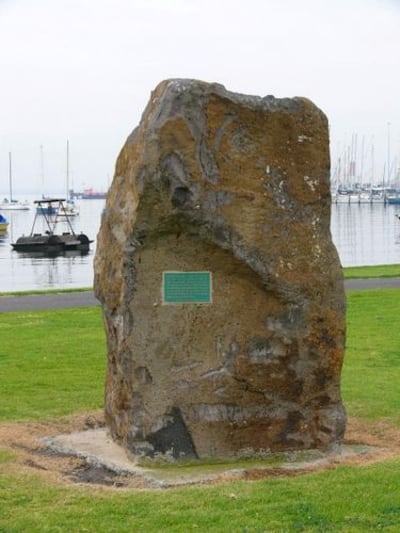Some 171 years ago, six ships made their way across the world, to sail into the blue waters of Hobson’s Bay and the then fledgling city of Melbourne. The ships were the Lady Kennaway, Pemberton, Diadem, New Liverpool, Derwent and Eliza Caroline, and their arrival would herald a remarkable chapter in Irish-Australian history.
At the height of the Irish Famine, the Earl Grey scheme fashioned a plan to ease overcrowding in the workhouses of Ireland, while providing serving staff and a way to help settle the new Australian colony. As a result, between 1849 to 1851, 4,000 Irish Famine orphan girls were brought to Australia from workhouses across Ireland, with 1,700 arriving in Melbourne.
They had been among the destitute; orphans consigned to the despair of workhouses, feared places of last resort for the most desperate. The voluntary scheme was open to girls aged 14 to 20 years who were deemed suitable and healthy.
After the brutal conditions of the workhouses and the horror of the Great Hunger, life on board ship was a significant improvement. According to 1848 records of the Lady Kennaway, the complement of 191 Irish orphan girls were well behaved and in excellent health, enjoying the benefit of a full allowance of rations on the 85-day voyage. Although few could read and almost none could write, they were given a prayer book and testament from their poorhouses.
Expectations must have been high for their new life in the New World but, instead, they met a climate of fear and suspicion towards the influx of Irish refugees. As a result, the girls were widely criticised in the press and often subjected to abuse in the streets, with reports of exploitation and even mistreatment by unprincipled employers. Criticisms ridiculed their appearance, aptitude, abilities and moral fibre.
This excerpt from Melbourne’s main newspaper of the day, The Argus, on April 4th, 1850 is a typical example:
“Another ship-load of female immigrants from Ireland has reached our shores, and yet, though everybody is crying out against the monstrous infliction, and the palpable waste of the immigration fund, furnished by the colonists in bringing out these worthless characters, nobody has, for so far, sufficiently shaken off the ordinary apathy which besets the community, to set about the necessary means for getting up a remonstrance against the farther continuance of a system fraught with such fearful evils to the whole community …”.
But the orphan girls were made of stern stuff. While some undoubtedly fell on hard times, most would successfully marry and raise healthy families across Australia. Today, many thousands of their descendants are living testament to the courage and strength of the Irish Famine orphan girls.
Three of the least-known stories intersect with another moment in Australian history, as members of the Kelly Gang had Irish Famine orphan girls in their families. Joe Byrne's mother was Margaret White, from Co Clare, who arrived in Sydney on February 6th, 1850 aboard the Thomas Arbuthnot. Aged 16, Margaret could read and write, and was sent to a rural area to work as a house servant for which she was paid ?7- 8/ for two years. She married Patrick Byrne of Co Carlow, and they settled in Victoria where they had six children.
Arriving on the same ship was Bridget Young from Co Galway. Bridget married Richard Hart and settled in Wangaratta, Victoria, and their children included Steve Hart (b 1859). The family were successful farmers with a lot of land.

In tribute, the orphan girls’ story is annually commemorated in the cities they first called home in the New Land. This weekend, it’s Melbourne’s turn to host, with the addition of an International Famine Commemoration event announced by Minister for Culture, Heritage and the Gaeltacht Josepha Madigan, who chairs the National Famine Commemoration Committee. A daytime ceremony will be held at Famine Rock in Williamstown, a standing stone monument erected in 1998, funded largely by public donation, followed by a round-table discussion on the Irish Famine and Australia in the evening.
During his visit to Australia last year, President Michael D Higgins made headlines when calling out Irish responsibilities for the dispossession of Aboriginal Australians. But as Irish Famine Commemoration Committee chair, Val Noone, has pointed out, the Melbourne Irish community took a stand on this point 20 years ago. The Famine Rock bears the words, “In sorrow for the dispossession of the Bunurong and Woirworrung people, but in a spirit of reconciliation”, the only monument to the Famine which tables sorrow at the dispossession of the Aboriginal people.
For more information about the Irish Famine Commemoration events in Melbourne this Sunday, October 28th, see thefamineandaustralia.eventbrite.com.au or facebook.com/Irish-Famine-Orphan-Girls-Commemoration











